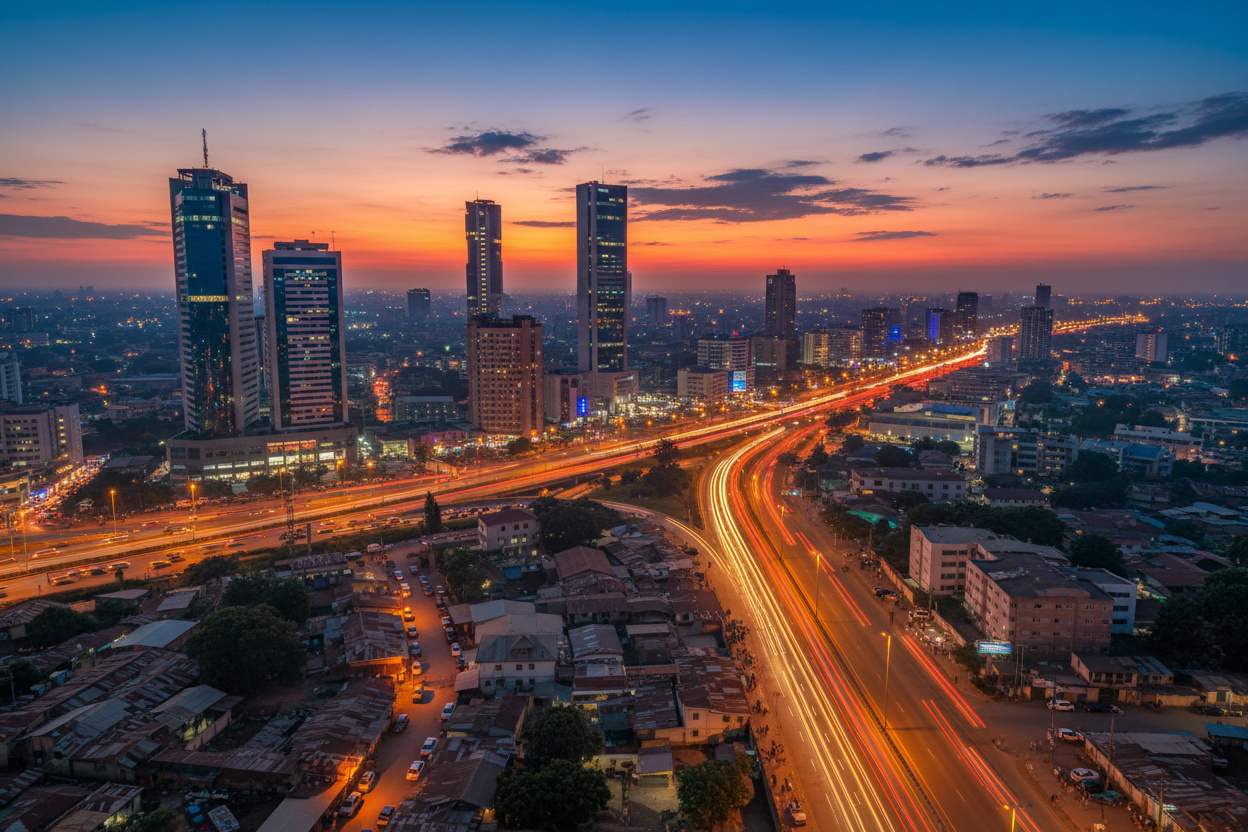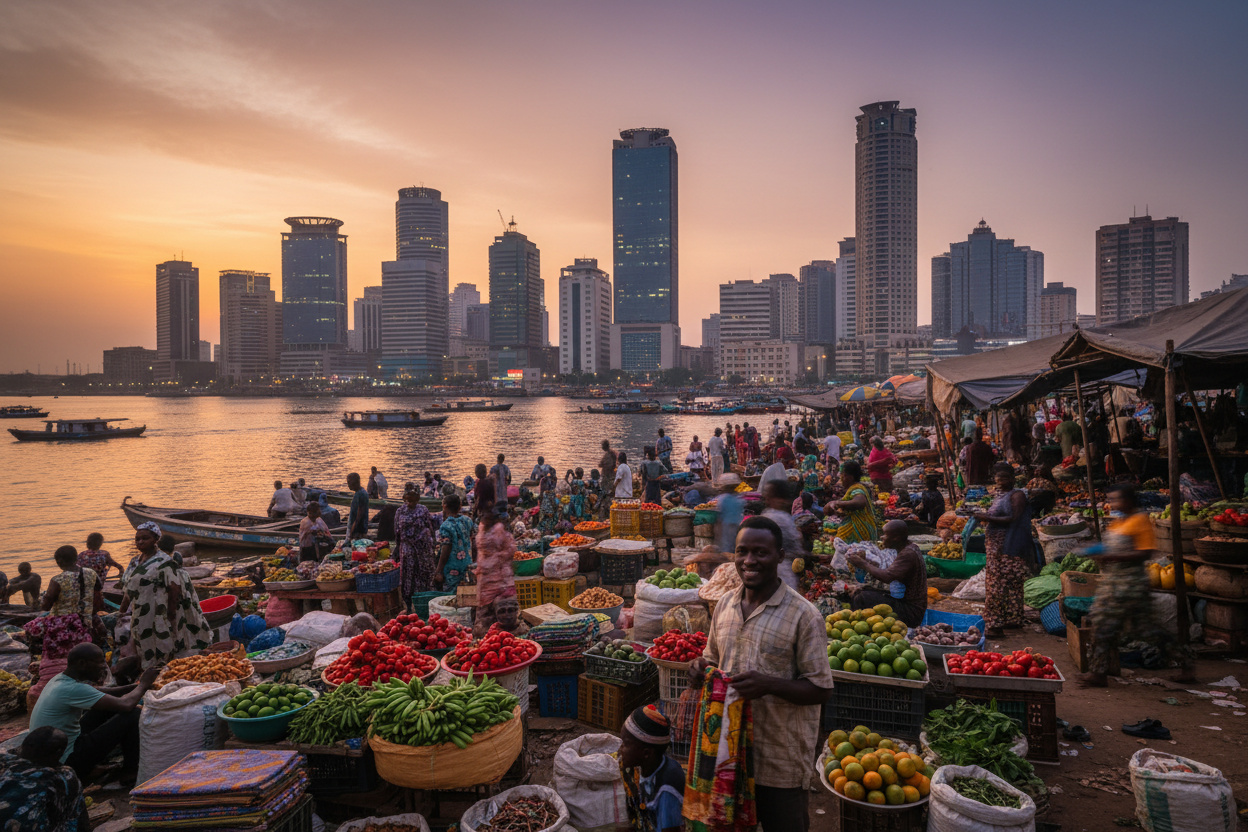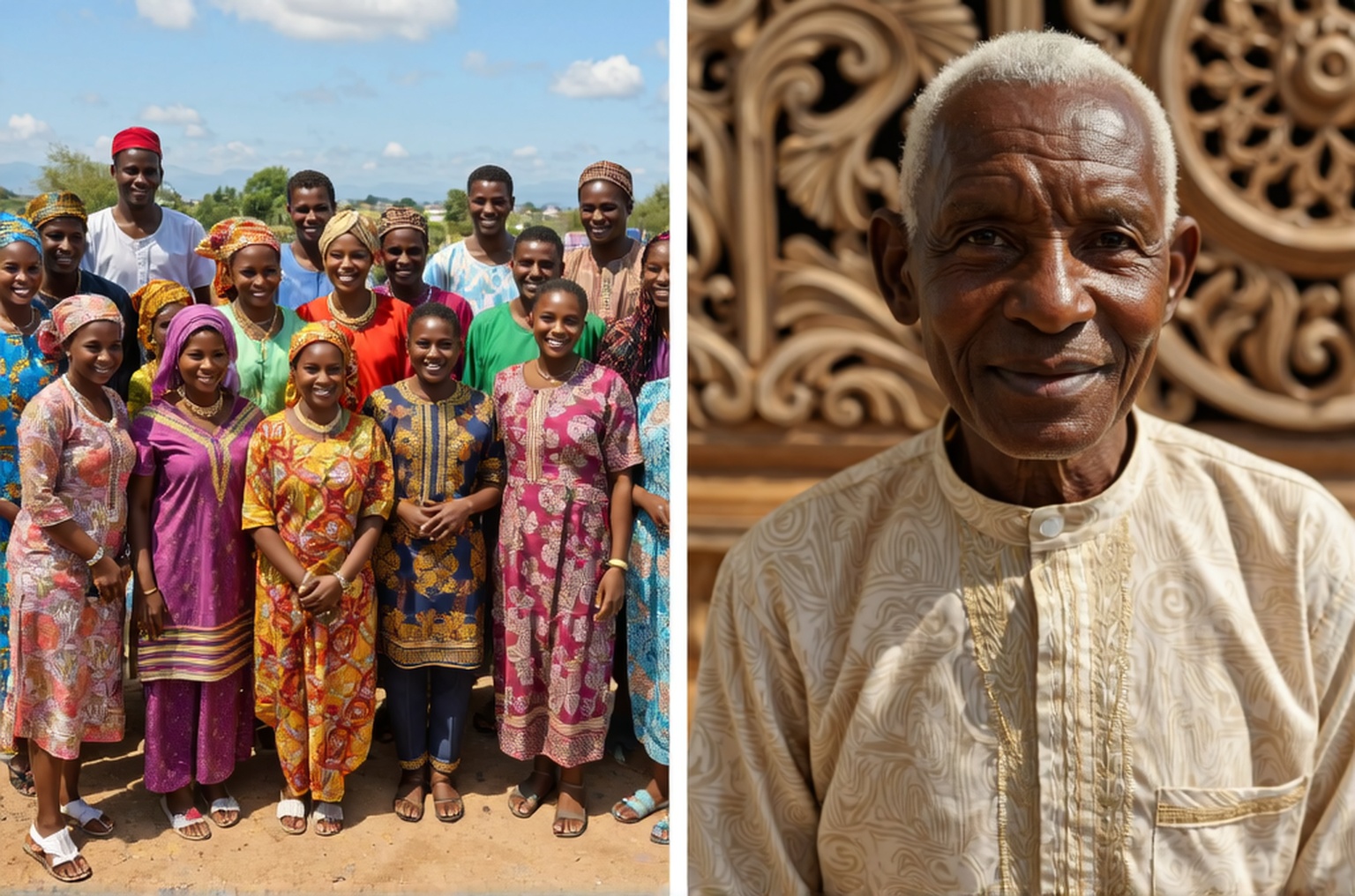After months of poring over World Bank data, IMF reports, and countless conversations with economists across Lagos, Abuja, and Port Harcourt, I’m excited to share what I’ve learnt about Nigeria’s development status. Having spent years analysing African economies and witnessing Nigeria’s transformation firsthand, this question sits at the heart of understanding our nation’s place in the global economy.
The classification of developing countries separates nations like Nigeria from their wealthy counterparts, and the distinction matters immensely for investment flows, international aid eligibility, and how our economy is perceived globally.
The short answer might surprise you, but the fuller picture is far more interesting.
Is Nigeria a developed country? No, Nigeria is classified as a developing country by international standards, with a GDP per capita of approximately ₦1.2 million (around $1,080) as of 2024. The country faces significant infrastructure challenges, high poverty rates exceeding 40%, and ranks 163rd out of 191 countries on the Human Development Index, placing it firmly in the developing nation category despite being Africa’s largest economy by total GDP.
Let me take you through what this really means for our nation and where we stand compared to our neighbours.
Understanding Nigeria’s Economic Classification
Nigeria sits in rather an unusual position globally. We’re simultaneously Africa’s largest economy and home to some of the continent’s wealthiest individuals, yet we struggle with basic infrastructure that developed nations sorted decades ago.
I remember visiting a friend’s tech startup in Yaba last year. Brilliant minds creating world-class software, but the generator outside rumbled constantly because NEPA (sorry, I mean the power distribution companies!) couldn’t guarantee six hours of electricity. That contradiction tells you everything about our development status.
The World Bank classifies Nigeria as a lower-middle-income country. We’re not among the least developed nations, but we’re nowhere near the high-income threshold of $13,845 per capita that marks developed status. According to the National Bureau of Statistics, our economic challenges stem from decades of structural issues, not lack of potential. Research from the Central Bank of Nigeria consistently shows that whilst our total GDP appears impressive, per capita income remains stubbornly low.
Think of it this way: Nigeria is rather like a promising university student with brilliant ideas but constantly battling unreliable transport to lectures. The potential is undeniable, but the fundamentals need serious work.
What defines a developed country anyway? The metrics include GDP per capita above $13,000, life expectancy exceeding 75 years, literacy rates above 95%, robust infrastructure (reliable electricity, clean water, functioning roads), diversified economies not dependent on single commodities, and strong institutional frameworks supporting business and governance.
Nigeria ticks precisely none of these boxes completely.
Which African Country Is Most Developed?
This question comes up constantly at economic forums, and the answer depends on how you measure development.
Seychelles often tops the charts with the highest GDP per capita on the continent, hovering around $18,000 per person. But here’s the thing: Seychelles has a population smaller than most Nigerian local government areas. It’s rather like comparing a boutique shop to Balogun Market. Both work brilliantly, but they’re fundamentally different beasts.
Mauritius frequently ranks as Africa’s most developed nation by multiple measures. Their GDP per capita sits around $11,000, they’ve got excellent infrastructure, low corruption levels, and a diversified economy spanning tourism, financial services, and manufacturing. I’ve got a colleague who moved there for a fintech project, and the contrast with Lagos startled him. Reliable electricity! Roads without potholes! It felt, he said, rather like discovering a parallel universe.
South Africa once held the crown as Africa’s most developed economy. With a GDP per capita of roughly $7,000, sophisticated financial markets, and world-class infrastructure in major cities, they’ve maintained strong development indicators. However, persistent inequality, unemployment above 30%, and ongoing electricity challenges have tarnished that shine recently.
Botswana deserves serious mention here. Their diamond wealth has been managed remarkably well, translating into GDP per capita around $8,000, excellent governance ratings, and steady development progress. Unlike Nigeria’s oil wealth (which, let’s be honest, hasn’t transformed the average person’s life), Botswana channelled mineral revenues into education, healthcare, and infrastructure. The difference? Vision and consistency.
When we look at economic forecasts, Nigeria actually shows promising growth trajectories. Recent Guardian Nigeria coverage of economic recovery momentum highlights how investor confidence is gradually returning, though structural challenges persist stubbornly.
Key Development Indicators Across Africa
| Country | GDP Per Capita (₦ equivalent) | HDI Ranking | Life Expectancy | Infrastructure Score |
|---|---|---|---|---|
| Seychelles | ₦25.2 million | 67th | 73 years | 8.2/10 |
| Mauritius | ₦15.4 million | 63rd | 75 years | 7.8/10 |
| Botswana | ₦11.2 million | 108th | 69 years | 6.5/10 |
| South Africa | ₦9.8 million | 109th | 64 years | 7.1/10 |
| Nigeria | ₦1.2 million | 163rd | 55 years | 3.2/10 |
These figures tell a sobering story about where Nigeria stands. Whilst our total GDP might impress, when divided amongst 232 million people, each Nigerian would theoretically receive just ₦1.2 million annually if wealth were distributed equally (which, obviously, it isn’t).
What Class of Country Does Nigeria Belong To?
Nigeria occupies the “lower-middle-income” category in the World Bank’s classification system. This places us above low-income nations like Niger, Chad, and Somalia, but well below upper-middle-income countries like South Africa, Algeria, and Egypt.
The lower-middle-income bracket encompasses countries with GNI per capita between $1,086 and $4,255. Nigeria sits near the bottom of this range, which explains why poverty remains so widespread despite our enormous economy.
I attended an economic summit in Abuja where a finance minister put it brilliantly: “We’re rich as a nation but poor as individuals.” That paradox defines Nigeria’s development class. Our $250 billion economy (after recent rebasing) ranks fourth in Africa, yet 63% of Nigerians live below the poverty line.
How did we get here? The Central Bank of Nigeria’s economic research points to several factors: overdependence on oil revenues (which now contribute just 4.6% to GDP but still dominate exports), weak infrastructure discouraging manufacturing, massive corruption siphoning resources away from productive uses, rapid population growth outpacing economic expansion, and insufficient investment in education and healthcare.
Here’s what frustrates me most: we’ve had the resources to climb into upper-middle-income status. Countries like Malaysia and Indonesia started at similar points in the 1960s. They’re now approaching developed status whilst we’ve treaded water (or worse, moved backwards when you account for population growth).
The services sector now dominates our economy at 57.4% of GDP, with agriculture at 25.6% and industry at just 17%. Compare this to developed nations where industry and technology typically represent 30-40% of GDP. Our economic structure still resembles a developing economy, with too much dependence on low-productivity agriculture and not enough manufacturing.
Recent analysis of Nigeria’s economic structure following rebasing revealed how far we’ve fallen behind. Whilst the rebasing provided a more accurate picture, it couldn’t hide uncomfortable truths about our development trajectory.

Is Nigeria a Rich Country, Yes or No?
This question demands nuance, because the answer is simultaneously yes and no.
Yes, Nigeria is rich in resources. We possess the world’s ninth-largest natural gas reserves, Africa’s largest oil deposits, vast agricultural potential across 84 million hectares of arable land, incredible human capital with a young, educated population, and a massive consumer market of 232 million people that multinational corporations can’t ignore.
I’ve met Nigerian engineers working on cutting-edge projects in London and New York. Our tech startups raise millions in venture capital. Nigerian entertainers dominate African music globally. The potential is undeniable.
But no, Nigeria is not a rich country when we measure what matters most: the lived experience of average citizens.
Let me paint you a clearer picture. The World Bank recently reported that Nigeria ranks 146th out of 191 countries by GDP per capita, with each Nigerian theoretically earning ₦1.2 million annually if wealth were equally distributed. That’s ₦100,000 monthly. Sounds decent until you realise most Nigerians earn far less because wealth concentration is severe.
The richest 5% of Nigerians control more wealth than the bottom 80% combined. It’s rather like having a few extraordinarily wealthy families in a mansion district whilst entire neighbourhoods lack clean water. The aggregate wealth exists, but distribution is catastrophically unequal.
Consider these realities:
- Over 90 million Nigerians live in extreme poverty (less than ₦1,500 daily)
- 70% of households lack reliable electricity
- 60 million people lack access to clean water
- Life expectancy sits at just 55 years versus 81 in developed nations
- Maternal mortality rates remain among the world’s highest
I visited a private hospital in Ikoyi where treatment costs ₦500,000 for procedures that citizens in developed countries receive free through national health systems. Across the street, a public hospital overflowed with patients who couldn’t afford basic medications. That juxtaposition exists throughout Nigeria.
The Federal Government’s acknowledgement that poverty remains a challenge despite economic recovery captures our contradiction perfectly. We’re growing economically yet more citizens slip into poverty annually.
Understanding Poverty Amidst Wealth:
Nigeria’s poverty paradox stems from several interconnected factors:
- Wealth Concentration: The top 10% control 70% of national wealth
- Informal Economy Dominance: 65% of workers operate in informal sectors without social protections or stable incomes
- Infrastructure Deficits: Unreliable electricity costs businesses ₦1.4 trillion annually in generator expenses
- Corruption: Estimated ₦7 trillion disappears annually through various corrupt practices
- Low Productivity: Agriculture employs 37% of workers but generates just 25.6% of GDP
- Currency Instability: Naira depreciation has eroded purchasing power dramatically
I know business owners who spend more on diesel for generators than on employee salaries. That’s not a rich country. That’s a nation haemorrhaging potential wealth through inefficiency.
Is Nigeria More Developed Than Ghana?
This comparison sparks heated debates in West African circles, and I’ve sat through enough of them to appreciate the nuances.
Ghana’s GDP per capita sits around ₦3.36 million ($2,400), roughly double Nigeria’s ₦1.2 million. That difference is immediately visible when you cross the border. Roads are better maintained, electricity is more reliable, and government services function more consistently.
But here’s where it gets interesting.
Nigeria’s total economy ($250 billion) absolutely dwarfs Ghana’s $76 billion. We produce more oil, have vastly superior telecommunications infrastructure, possess deeper financial markets, and our entertainment industry (Nollywood, Afrobeats) dominates the continent. Our ports handle significantly more cargo than Ghana’s, and Lagos alone generates more revenue than Ghana’s entire national budget.
So which country is “more developed”? It depends entirely on your metric.
Size vs. Quality:
If we’re measuring total economic output, manufacturing capacity, or global influence, Nigeria wins handily. Our economy is more than three times larger, our population seven times bigger, and our geopolitical importance significantly greater.
If we’re measuring quality of life indicators, Ghana edges ahead. Their poverty rate sits at 24% versus Nigeria’s 63%. Life expectancy in Ghana reaches 64 years compared to our 55. Infrastructure reliability, whilst not perfect, surpasses ours considerably. Corruption, though present, is less pervasive.
I’ve got friends who relocated businesses from Lagos to Accra specifically because of reliable electricity and better ease of doing business scores. Ghana ranks 118th globally on ease of doing business; Nigeria languishes at 131st.
Here’s my honest assessment after visiting both countries extensively: Ghana feels more developed when you’re walking the streets, using services, or trying to conduct business. The basics work more reliably. Nigeria feels more developed when you’re looking at economic statistics, market size, or investment opportunities. The potential is greater.
Ghana has done better at converting resources into citizen welfare. Nigeria has created more total wealth but distributed it far less equitably. Ghana is rather like a smaller, well-organised shop where everything runs smoothly. Nigeria is like a massive warehouse with incredible inventory but chaotic management.
Recent IMF projections showing Nigeria’s economy will outpace the UK and several advanced economies in 2025 demonstrate our growth potential, but growth rates alone don’t tell the development story. A 3.4% growth rate applied to a poorly distributed economy doesn’t automatically improve lives.
One striking difference: Ghana’s government debt to GDP ratio remains manageable at around 82%, whilst Nigeria’s sits at 38%. This gives Ghana more fiscal flexibility despite their smaller economy. They’ve also managed currency stability better, with the cedi depreciating less dramatically than the naira over recent years.
How to Assess Economic Development Status: A Step-by-Step Guide
Understanding whether a country qualifies as developed requires examining multiple indicators systematically. Let me walk you through the process I use when analysing economies:
Step 1: Calculate GDP Per Capita Divide the nation’s total GDP by population. For developed status, you’re looking for figures above ₦18.9 million ($13,500) per person annually. Nigeria’s ₦1.2 million falls drastically short, placing us firmly in developing territory.
Step 2: Examine the Human Development Index (HDI) The National Bureau of Statistics tracks HDI through three components: life expectancy, education access and quality, and standard of living. Developed nations score above 0.800 on the HDI scale. Nigeria scores 0.535, ranking 163rd globally. That’s not just below developed status; it’s in the lower half of developing nations.
Step 3: Assess Infrastructure Quality Measure electricity access (Nigeria: 55% with regular supply), clean water access (45% of population), road quality (only 29% of roads paved), internet penetration (42%), and healthcare facility availability (1 doctor per 5,000 people versus 1 per 300 in developed nations).
Step 4: Evaluate Economic Diversification Calculate what percentage of exports come from a single sector. Developed nations rarely depend on one sector for more than 30% of export revenues. Nigeria derives 90% of export income from oil and gas. That extreme concentration signals underdevelopment.
Step 5: Review Poverty and Inequality Metrics Examine what percentage lives below the poverty line. Developed nations keep this under 15%. Nigeria’s 63% poverty rate is catastrophic. Also check the Gini coefficient (measuring inequality): Nigeria scores 0.48, indicating severe wealth concentration.
Step 6: Analyse Institutional Strength Evaluate corruption indices, rule of law scores, regulatory quality, and government effectiveness. Developed nations score above 70 on these measures. Nigeria averages around 28, revealing weak institutions that hamper development.
Step 7: Measure Education and Healthcare Outcomes Check literacy rates (developed: 99%+, Nigeria: 62%), primary school completion (developed: 98%+, Nigeria: 67%), life expectancy (developed: 78+ years, Nigeria: 55 years), and infant mortality (developed: under 5 per 1,000 live births, Nigeria: 74 per 1,000).
Following these steps makes Nigeria’s developing status undeniable. We fail every major threshold by significant margins.
Conclusion: Understanding Nigeria’s Development Journey
Is Nigeria a developed country? The data conclusively says no. We’re a lower-middle-income developing nation with enormous potential but equally enormous challenges.
What I’ve learnt after years covering this topic is that Nigeria possesses all the ingredients for development: natural resources, human capital, a large internal market, and strategic geographic position. What we lack is the institutional framework, infrastructure foundation, and equitable distribution systems that convert resources into shared prosperity.
The path forward requires acknowledging uncomfortable truths. Economic growth alone won’t elevate us to developed status. Ghana’s example shows that smaller economies with better governance can deliver superior quality of life. Malaysia and Indonesia demonstrate that countries starting from similar positions can reach middle-income status within a generation through consistent policy implementation.
Nigeria needs to diversify beyond oil dependence, invest massively in infrastructure (particularly electricity and transportation), strengthen institutions to reduce corruption, reform education to match labour market needs, and implement progressive taxation that redistributes wealth more equitably.
The good news? We’re having these conversations more openly. Civil society demands better governance, young entrepreneurs create solutions despite obstacles, and there’s growing recognition that our current trajectory is unsustainable.
Key Takeaways:
- Nigeria remains a lower-middle-income developing country despite having Africa’s fourth-largest economy, with GDP per capita of ₦1.2 million falling far below the ₦18.9 million threshold for developed status.
- Infrastructure deficits, particularly in electricity and transportation, cost the economy ₦1.4 trillion annually and prevent manufacturing growth essential for development.
- Addressing extreme wealth inequality (where the top 10% control 70% of wealth) through progressive taxation and inclusive growth policies is essential for achieving shared prosperity and developed status.
Connecting Nigeria’s Development to Broader National Identity
Understanding Nigeria’s development status connects deeply to questions about who we are as a people and where we’re heading. When I previously explored whether Nigeria qualifies as wealthy despite widespread poverty, the paradox became strikingly clear: we possess massive aggregate wealth that somehow fails to improve most citizens’ lives due to severe distribution problems and institutional weaknesses.
Similarly, when examining our federal structure and how the wealthiest state generates more internal revenue than most others combined, the uneven development patterns across our 36 states reveal why national statistics often mask drastically different local realities. These broader questions about our economic identity and governance structures all feed into understanding why Nigeria remains classified as developing despite our enormous potential and resources.
FAQ: Is Nigeria a Developed Country?
Is Nigeria currently classified as a developed country?
No, Nigeria is officially classified as a lower-middle-income developing country by the World Bank and international financial institutions. Our GDP per capita of approximately ₦1.2 million ($1,080) falls far below the ₦18.9 million ($13,500) threshold that typically defines developed nations.
What are the main reasons Nigeria remains underdeveloped despite its large economy?
Nigeria faces severe infrastructure deficits (particularly electricity), extreme wealth inequality where the top 10% control 70% of wealth, overdependence on oil exports for 90% of export revenues, weak institutions plagued by corruption, and rapid population growth that outpaces economic expansion. These factors prevent our large total GDP from translating into improved living standards for average citizens.
How does Nigeria’s Human Development Index compare to developed countries?
Nigeria ranks 163rd out of 191 countries with an HDI score of 0.535, placing us in the “low human development” category. Developed nations typically score above 0.800, with countries like Norway (0.961), Switzerland (0.955), and Ireland (0.950) leading globally, whilst Nigeria trails significantly behind even regional peers like Ghana (0.611) and South Africa (0.713).
Which African countries are considered most developed?
Seychelles ranks highest with GDP per capita around ₦25.2 million, followed by Mauritius (₦15.4 million), Botswana (₦11.2 million), and South Africa (₦9.8 million). However, no African country currently meets all criteria for fully developed status, though Seychelles and Mauritius come closest with robust infrastructure, high life expectancy, and diversified economies.
Can Nigeria become a developed country within the next 20 years?
Achieving developed status by 2045 would require sustained annual GDP per capita growth exceeding 12%, compared to our current 2-3% rate. Whilst theoretically possible, this would demand transformative reforms including infrastructure investment exceeding ₦50 trillion, economic diversification away from oil, elimination of corruption saving ₦7 trillion annually, and doubling educational attainment rates, making it extremely challenging though not impossible.
What is the difference between Nigeria’s total GDP and GDP per capita?
Nigeria’s total GDP of approximately ₦372.8 trillion ($250 billion) ranks fourth in Africa, but when divided among 232 million people, each Nigerian theoretically receives just ₦1.2 million annually. This distinction explains why Nigeria simultaneously appears “rich” in aggregate statistics yet most citizens experience poverty, as total wealth doesn’t reflect individual living standards or distribution patterns.
How does corruption affect Nigeria’s development status?
Corruption costs Nigeria an estimated ₦7 trillion annually through embezzlement, contract inflation, and inefficient resource allocation. This diverted wealth could fund universal healthcare (₦2.5 trillion), double education spending (₦1.8 trillion), and build transformative infrastructure, but instead enriches a small elite whilst perpetuating underdevelopment through weakened institutions and reduced public services.
Is Nigeria richer than Ghana when comparing development indicators?
Ghana’s GDP per capita (₦3.36 million) is roughly double Nigeria’s (₦1.2 million), and Ghana scores higher on quality of life metrics including poverty rates (24% vs 63%), life expectancy (64 vs 55 years), and infrastructure reliability. However, Nigeria’s total economy ($250 billion) is three times larger than Ghana’s ($76 billion), demonstrating that economic size doesn’t automatically translate to superior development or citizen welfare.
What infrastructure improvements would most accelerate Nigeria’s development?
Reliable electricity generation and distribution (currently only 55% have regular access) would save businesses ₦1.4 trillion spent on generators annually, whilst improved transportation networks, clean water access for the 60 million currently lacking it, digital infrastructure expansion, and modernised ports would collectively enable manufacturing growth. These infrastructure investments could boost GDP growth from 3% to 7-8% annually whilst improving quality of life dramatically.
How does life expectancy in Nigeria compare to developed countries?
Nigeria’s life expectancy of 55 years falls 26 years below the developed world average of 81 years. This gap reflects inadequate healthcare infrastructure (1 doctor per 5,000 people vs 1 per 300 in developed nations), high maternal mortality (512 deaths per 100,000 live births), preventable disease burden, malnutrition affecting 37% of children, and limited health insurance coverage reaching just 5% of the population.
What economic sectors could drive Nigeria toward developed status?
Agriculture modernisation could triple productivity whilst reducing the sector’s 37% employment share, manufacturing expansion in export processing zones could generate millions of jobs, technology sector growth building on our fintech success, renewable energy development could solve power deficits, and tourism leveraging our cultural wealth could diversify foreign exchange earnings. Successfully developing these sectors could shift Nigeria from resource-dependent to value-added economic structure characteristic of developed nations.
How accurate are GDP statistics in measuring Nigeria’s true development level?
GDP statistics capture formal economic activity but miss Nigeria’s massive informal sector (65% of employment), don’t reflect wealth distribution showing extreme inequality, fail to account for environmental degradation from oil extraction, ignore quality of life factors like infrastructure reliability, and can’t measure corruption’s hidden costs. Therefore, GDP per capita of ₦1.2 million likely overstates average living standards, making HDI, poverty rates, and infrastructure metrics more reliable development indicators.






